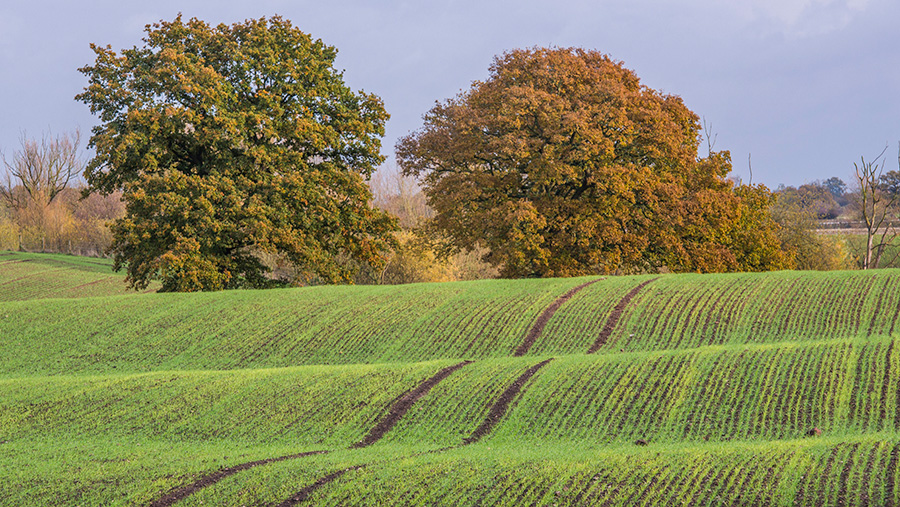English land values fall by up to 10% in 12 months
 © FLPA/John Eveson/REX/Shutterstock
© FLPA/John Eveson/REX/Shutterstock Land prices in England and Wales have fallen by up to 10% in the past 12 months, say leading agents.
Commodity prices, although picking up, are still low and are thought to be the main cause, with Brexit being a smaller contributing factor.
Figures differ slightly between agents, partly because of the different ways they collect data, but there is general agreement that farmland values have dropped.
According to Knight Frank’s farmland index, the price of bare arable and grassland in England and Wales fell nearly 8% in the 12 months to the end of September to £7,672/acre.
This was the equivalent of wiping £634 off the value of an acre and took prices back to where they were two years ago.
See also: International farmland: Guide to the global land market
In comparison, September last year recorded the highest price ever on the agent’s index, at £8,306/acre.
Looking just at bare arable land prices, Strutt & Parker released figures this week showing values in England had fallen 10% in the past 12 months, with the third quarter seeing a 7% fall compared with the previous quarter.
According to Savills, however, the price of prime bare English arable land fell 4.3% in the 12 months to September, while all land types fell 3.4%.
Autumn will test the market
Clive Hopkins, head of farms and estates at Knight Frank, said farm prices were the most unpredictable he had seen in his career.
Autumn was always going to be the biggest post-EU referendum test of the land market, he said, but so far interest had been very strong.
“Now that it is clear the world isn’t collapsing and for the first time in several years we have no major elections or referendums ahead, a lot of hesitant vendors have decided that there seems little point in delaying a sale,” he said.
Although the real test could come after Brexit, Mr Hopkins said he thought the UK’s standing as a safe and efficient place to make transactions on farmland would hold it in good stead.
Farmer-buyers lowest on record
Despite the lower land prices, farmers now made up only 50% of buyers, according to Strutt & Parker – the lowest proportion recorded since the agents tracker started in 1996.
“Agriculture has been going through a very difficult time with low commodity prices putting severe pressure on cashflow and profitability,” said Michael Fiddes, head of estates and farm agency at the agent.
See also: Insurance giant to dispose of 4,200-acre Hampshire estate
“As a result, farmers’ ability to service the debt needed to acquire land has become more challenged.”
However, Ian Bailey, head of research at Savills, said: “The prospect of a significant increase in farm subsidies this year due to the weak pound may help support land values as the increases support may slow debt related sale and therefore supply.”
The slide of the land market
As early as August last year agents started to say they expected land prices to start falling, as low commodity prices continued to fall.
See also: Farmland values slow while arable land prices start to fall
The first evidence land prices had started to slow and then start to fall then emerged in September, with Knight Frank’s land index showing land prices increased by just 0.5% between the third quarter and second quarter.
Savills, said values were already starting to fall, particularly for prime English arable land.
